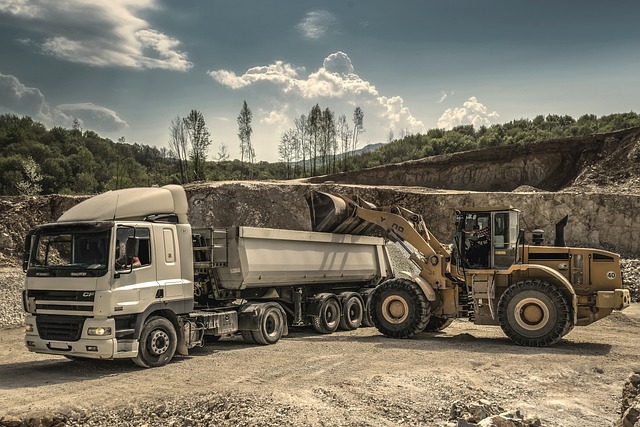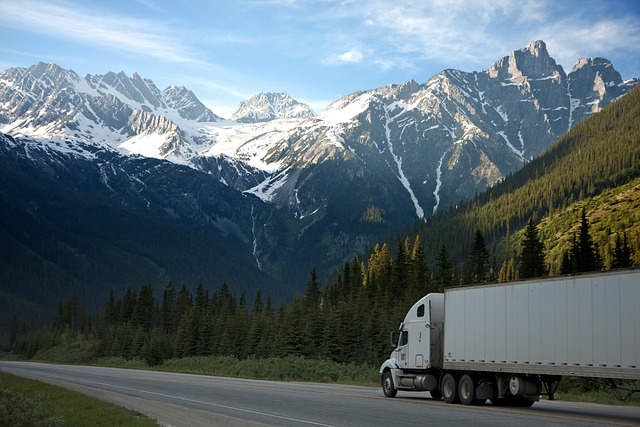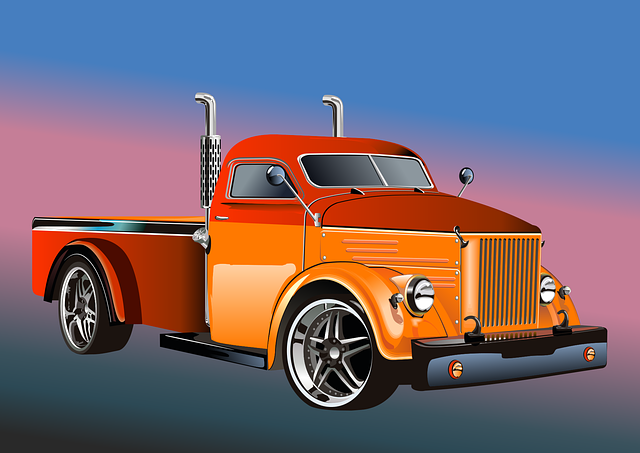Liability and physical damage insurance are indispensable for commercial box truck operators to ensure financial protection against legal claims, lawsuits, and vehicle damages. Liability coverage is essential for protecting against bodily injury or property damage resulting from accidents, safeguarding your assets and enabling business continuity. Physical damage insurance specifically covers the truck itself, with collision coverage for vehicle-related accidents and comprehensive coverage for non-collision events like theft, vandalism, or natural disasters. For box truck businesses, tailored insurance is crucial for maintaining operational integrity and financial health on the road. It's important to consider factors such as cargo value, vehicle condition, and operational risks when selecting coverage levels like agreed value or actual cash value. Specialized coverage may be needed for perishable goods and additional protection for non-owned trucks. With the diverse risks in trucking operations, securing robust insurance for box trucks is vital, including contingent cargo insurance and hiring/non-owned auto physical damage coverage to cover all bases in the dynamic commercial transportation sector.
When transporting goods via box truck in the dynamic trucking sector, safeguarding against liabilities and damages is paramount. This article meticulously explores the nuances of liability and physical damage coverage tailored for box truck operations, catering to both owner-operators and fleet managers. We delve into the essentials of liability insurance, the intricacies of physical damage protection, and strategies to optimize your coverage, ensuring you are well-equipped to navigate the complexities of commercial trucking with confidence. Understanding the right policies for your box truck can make a significant difference in protecting your business against unforeseen events on the road.
- Understanding Liability and Physical Damage Coverage for Box Trucks: A Comprehensive Guide for Owner-Operators and Fleets
- The Essentials of Liability Insurance for Box Truck Operations in the Trucking Industry
- Navigating Physical Damage Protection: What to Expect with Your Box Truck
- Strategies for Optimal Coverage: Maximizing Liability and Physical Damage Policies for Box Trucks in the Commercial Sector
Understanding Liability and Physical Damage Coverage for Box Trucks: A Comprehensive Guide for Owner-Operators and Fleets

When navigating the complexities of commercial trucking, understanding the nuances of liability and physical damage coverage for box trucks is paramount. Liability insurance for box trucks, a critical component in any owner-operator or fleet’s insurance portfolio, provides financial protection against claims resulting from bodily injury or property damage caused by the truck in an accident. It covers legal costs and settlements, safeguarding your assets and business operations from potential lawsuits.
Physical damage coverage, on the other hand, specifically addresses losses directly related to the box truck itself. This aspect of insurance includes collision coverage for damages resulting from accidents involving other vehicles or objects, and comprehensive coverage for non-collision events such as theft, vandalism, or natural disasters. For owner-operators and fleets, the security that comes with knowing that the investment in your box truck is protected against unforeseen incidents is invaluable. It ensures that your business remains operational even when faced with costly repairs or replacement of equipment. Understanding the specific needs of your operations, tailoring the right coverage options, and partnering with a reputable insurance provider are essential steps in securing your assets on the road.
The Essentials of Liability Insurance for Box Truck Operations in the Trucking Industry

When operating a box truck within the trucking industry, liability insurance stands as a cornerstone in risk management and legal protection. This coverage is pivotal in safeguarding against claims or lawsuits resulting from bodily injury or property damage caused by the truck while on the road. It encompasses both third-party and first-party liabilities, ensuring that drivers are not personally responsible for business-related incidents involving the vehicle.
In the event of an accident or incident, liability insurance provides a financial safeguard, covering the costs associated with legal defense and settlements. This is particularly essential for box truck operations due to the size and usage of these vehicles; accidents can lead to significant damage or injury. Trucking companies must consider adequate bodily injury and property damage limits tailored to their specific risk profile, including the type of cargo transported and the frequency of routes traveled. This not only protects the financial health of the company but also instills confidence in clients and stakeholders by demonstrating a commitment to safety and compliance with industry standards.
Navigating Physical Damage Protection: What to Expect with Your Box Truck

When securing physical damage protection for your box truck, it’s crucial to understand the types of coverage available within the realm of commercial truck insurance. Box trucks, also known as cargo vans or straight trucks, are essential tools for businesses in the trucking and transportation sectors. They are designed to carry large quantities of freight, making them prone to potential damage or loss during transit, which is where physical damage coverage comes into play. This type of coverage typically includes options like collision insurance, which protects your box truck if it’s involved in an accident with another vehicle, and comprehensive coverage, which safeguards against non-collision events such as theft, vandalism, or natural disasters like floods or fires. Understanding the nuances of each type of coverage is essential to ensure that your box truck operations are well-protected against unforeseen events that could lead to costly repairs or replacements.
Opting for physical damage protection tailored for box trucks involves assessing factors such as the value of the cargo, the age and condition of the vehicle, and the typical routes and conditions it will encounter. Insurers may offer different levels of coverage based on these factors, often categorized as agreed value or actual cash value. With agreed value, if your box truck is damaged beyond repair or totaled, you’ll receive the pre-agreed amount for the vehicle regardless of its depreciated market value. Conversely, actual cash value coverage pays out based on the current market value of the truck at the time of the loss. It’s important to carefully consider these options and work with a knowledgeable insurance agent to determine the best coverage for your specific needs within the trucking industry.
Strategies for Optimal Coverage: Maximizing Liability and Physical Damage Policies for Box Trucks in the Commercial Sector

When securing liability and physical damage coverage for box trucks in the commercial sector, it’s crucial to assess the specific risks associated with trucking operations. A comprehensive policy should be tailored to address potential incidents involving the cargo, vehicle, and third-party liabilities. To begin, understanding the types of cargo carried by box trucks is essential, as certain items may necessitate additional protection or endorsements. For instance, hauling temperature-sensitive goods requires coverage that accounts for spoilage or loss due to temperature variance. Moreover, the physical damage component of the policy should be robust, covering not only the truck but also any equipment used in conjunction with the vehicle. Fleets operating multiple box trucks can benefit from a combined policy, which often provides cost-saving advantages and simplified management. It’s prudent to consider higher coverage limits than the state-mandated minimums to ensure adequate protection in the event of total loss or catastrophic damage. In the context of liability, additional coverage options like contingent cargo insurance can provide a safety net for losses that are not directly covered by primary cargo policies. Operators should also evaluate the need for hired and non-owned auto physical damage coverage, which extends protection to rented, leased, or borrowed trucks, an aspect increasingly relevant in dynamic trucking operations.
When securing liability and physical damage coverage for your box truck, it’s crucial to understand the distinctions between these forms of insurance and how they protect your operations within the trucking industry. This guide has demystified the essentials of liability insurance and outlined what to anticipate with physical damage protection. By implementing the strategies discussed for optimal coverage, you can ensure that your box truck is well-protected against various risks. Remember, as an owner-operator or fleet manager, having robust insurance policies in place isn’t just a legal requirement; it’s a prudent business practice that safeguards your assets and supports the continuity of your trucking operations. With this knowledge, you can confidently navigate the commercial sector with peace of mind, knowing that both your truck and your financial security are well-cushioned against potential incidents on the road.
